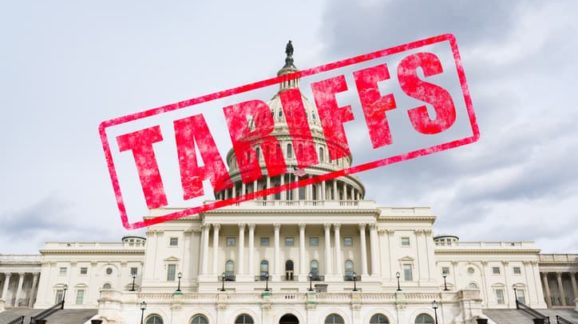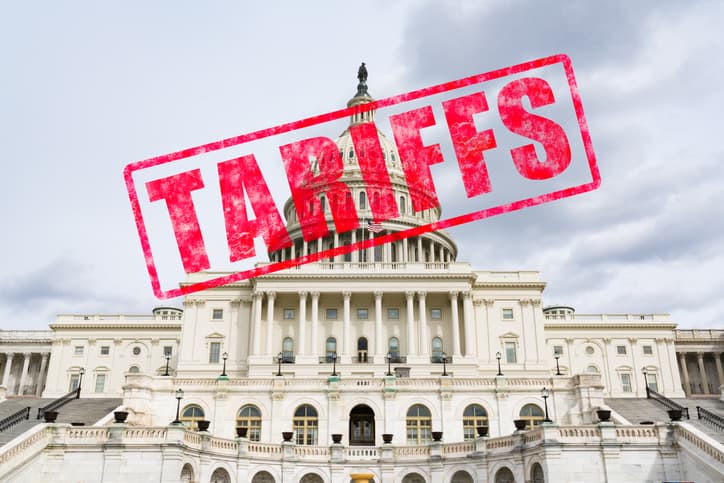Supreme Court Declines to Hear Steel Tariff Case: Time for Congress to Act

Photo Credit: Getty
 President Trump’s steel tariffs were intended to boost U.S. manufacturing. They backfired to the point where a group of steel-using industries sued to stop the tariffs. The case wound its way up to the Supreme Court, which this week announced it would not hear it. The tariffs will remain in place.
President Trump’s steel tariffs were intended to boost U.S. manufacturing. They backfired to the point where a group of steel-using industries sued to stop the tariffs. The case wound its way up to the Supreme Court, which this week announced it would not hear it. The tariffs will remain in place.
Although the Court will not act, Congress has the power to rescind the tariffs at any time. However, as the Cato Institute’s Dan Ikenson told Politico’s Morning Trade newsletter, “Congress is quite content with its abdication of trade authority, frankly.” President Trump is getting all of the blame for the trade war’s failures. This is fine with much of Congress—even many Republicans, who mostly did not favor Trump-style trade protectionism until changing their minds around January of 2017.
Sen. Chuck Grassley (R-IA) has proposed reclaiming some of Congress’ abdicated tariff authority, but his proposal’s political prospects are dim.
The Supreme Court case on the steel tariffs would have hinged in part on the separation of powers. Only Congress has the power to tax. Tariffs are taxes. That means only Congress, not the president, can enact tariffs. But there is a wrinkle. Back in the 1960s and 1970s, Congress delegated away some of its tariff-making power to the president. The steel tariffs were enacted under Section 232 of the Trade Expansion Act of 1962, which empowers the president to impose tariffs without congressional consent, provided they are imposed on national security grounds.
It is hard to tell which way the Court would have decided that question, since separation of powers arguments cut both ways. While the president does not have taxing power, Congress did delegate Section 232 powers to him. But how far does that delegation authority extend? How far do the powers reach? These questions will remain unanswered for now.
While frustrating, this may be for the better. The Supreme Court, whose members are presidentially appointed and Senate-approved, in part for that reason, tends to be permissive of executive power, and deferential to Congress.
The merits of the case are less ambiguous, though that is often of less importance in legal matters. The Section 232 steel tariffs, which originally targeted allies such as Canada and Mexico, do not pass any reasonable national security test. In a phone call with Canadian Prime Minister Justin Trudeau, for example, President Trump claimed that the tariffs were justified because Canada burned down the White House during the War of 1812.
This claim, while weak, is also inaccurate. The White House was burned by British soldiers. Those soldiers were stationed in Canada, but since Canada’s government did not gain independence until 1867, it can hardly be blamed. This also leaves aside Canada being one of America’s strongest allies through multiple wars and other national security threats, as well its largest trading partner.
#NeverNeeded steel tariffs are harming not just the steel industry, but steel-using industries such as construction and automobiles. In all, just the tariffs that President Trump alone has enacted are costing the economy roughly a half percentage point of economic growth, according to the Congressional Budget Office. While the country might have been able to afford such ideological luxury goods during a boom, it simply cannot during the COVID-19 recovery.
In CEI’s most recent Agenda for Congress, we argued that Congress should repeal not just Section 232 tariff authority, but also Sections 201 and 301 of the Trade Act of 1974, which allow presidential tariff-making to address foreign competition and treaty violations. Iain Murray and I also outlined a larger positive agenda for trade policy in our paper “Traders of the Lost Ark.”
The Trump tariffs have to go. Since the Court will not step up, Congress must act.